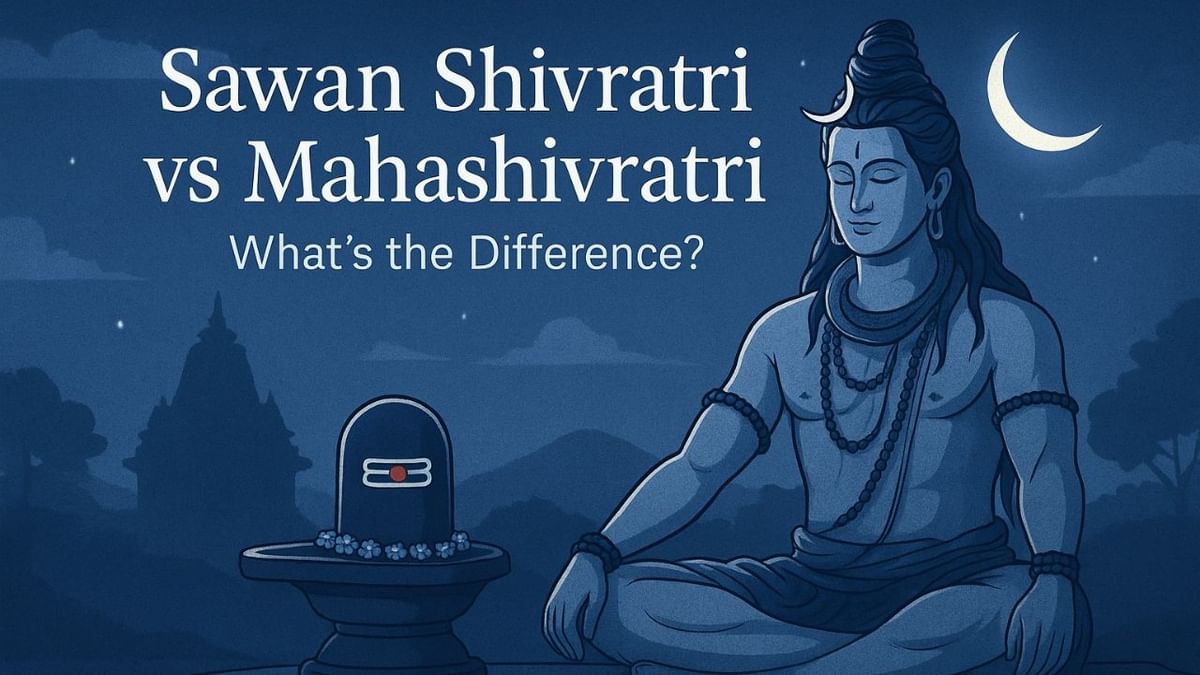Entertainment
Discover the Key Differences Between Sawan Shivratri and Mahashivratri

Many devotees often confuse Sawan Shivratri with Mahashivratri, viewing them as identical celebrations. Despite both festivals honoring Lord Shiva, they differ significantly in terms of timing, purpose, and spiritual meaning. Understanding these distinctions can enhance the devotional experience for followers of Hindu traditions.
Key Distinctions in Celebration and Timing
Sawan Shivratri and Mahashivratri are both significant events in the Hindu calendar, yet they occur at different times of the year. Mahashivratri is celebrated once annually, typically in the month of Phalgun, which falls between February and March. In contrast, Sawan Shivratri takes place during the holy month of Shravan, usually spanning July to August.
The timing of these events is not merely a calendar difference; it reflects their unique spiritual significance. While Mahashivratri is a singular event, Sawan Shivratri is celebrated monthly, specifically during the auspicious Sawan period.
Purposes Behind the Festivals
The purposes of these two celebrations also vary. Mahashivratri commemorates the divine marriage of Lord Shiva and Goddess Parvati, symbolizing their eternal union. This festival is marked by elaborate rituals and prayers, focusing on the harmony between the divine couple.
On the other hand, Sawan Shivratri serves as an opportunity for devotees to seek Lord Shiva’s blessings and grace. It is particularly revered during the Shravan month, which is considered highly auspicious. Devotees often engage in fasting and special prayers to connect with the divine energy of Lord Shiva during this time.
The lunar dates also play a crucial role in distinguishing the two festivals. Mahashivratri is observed on the Chaturdashi (14th day) of the Krishna Paksha (waning moon) in Phalgun. Sawan Shivratri is celebrated under the same lunar phase but specifically in the month of Shravan. Each of these days holds spiritual power, yet the sanctity of Sawan Shivratri enhances its significance among Shiva devotees.
Mythological and Ritual Significance
From a mythological perspective, sacred texts suggest that Lord Shiva manifested as a Jyotirlinga on the night of Mahashivratri. This event is believed to be a pivotal moment in Hindu cosmology, representing the manifestation of divine energy.
Sawan Shivratri is recognized as one of the monthly Masik Shivratri celebrations, but it gains additional prominence due to its occurrence in the holy month of Shravan. Rituals associated with these celebrations also differ slightly. During Sawan Shivratri, worship focuses exclusively on Lord Shiva. In contrast, Mahashivratri involves the worship of both Lord Shiva and Goddess Parvati, emphasizing the balance of energies between the two deities.
Performing rituals during Sawan Shivratri is believed to invite Lord Shiva’s blessings and protection. This differs from Mahashivratri, where the dual worship aims to foster harmony and sweetness in married life.
In summary, while both Sawan Shivratri and Mahashivratri are dedicated to Lord Shiva, they serve distinct purposes and embody unique spiritual meanings. Mahashivratri marks the divine union of Shiva and Shakti, celebrated annually with great reverence. Sawan Shivratri, conversely, offers devotees a sacred chance to connect with Lord Shiva’s energy during one of the holiest months in the Hindu calendar.
The information provided here is rooted in traditional beliefs and religious texts. For further insights into spirituality and related topics, readers are encouraged to explore reputable sources such as News9 Live.
-

 World5 months ago
World5 months agoSBI Announces QIP Floor Price at ₹811.05 Per Share
-

 Lifestyle5 months ago
Lifestyle5 months agoCept Unveils ₹3.1 Crore Urban Mobility Plan for Sustainable Growth
-

 Science4 months ago
Science4 months agoNew Blood Group Discovered in South Indian Woman at Rotary Centre
-

 World5 months ago
World5 months agoTorrential Rains Cause Flash Flooding in New York and New Jersey
-

 Top Stories5 months ago
Top Stories5 months agoKonkani Cultural Organisation to Host Pearl Jubilee in Abu Dhabi
-

 Sports4 months ago
Sports4 months agoBroad Advocates for Bowling Change Ahead of Final Test Against India
-

 Science5 months ago
Science5 months agoNothing Headphone 1 Review: A Bold Contender in Audio Design
-

 Top Stories5 months ago
Top Stories5 months agoAir India Crash Investigation Highlights Boeing Fuel Switch Concerns
-

 Business5 months ago
Business5 months agoIndian Stock Market Rebounds: Sensex and Nifty Rise After Four-Day Decline
-

 Sports4 months ago
Sports4 months agoCristian Totti Retires at 19: Pressure of Fame Takes Toll
-

 Politics5 months ago
Politics5 months agoAbandoned Doberman Finds New Home After Journey to Prague
-

 Top Stories5 months ago
Top Stories5 months agoPatna Bank Manager Abhishek Varun Found Dead in Well









